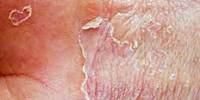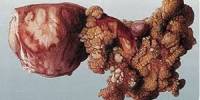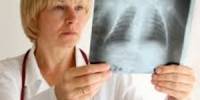Parkinson’s disease (Causes, Symptoms, and Complications)
Definition: Parkinson’s disease (PD) is a progressive central nervous system disorder that affects movement. It can come on so slowly that people don’t even notice it at first. But over time, what starts as a little shakiness in their hand can have an impact on how they walk, talk, sleep, and think.
Dementia becomes common in the advanced stages of the disease. Depression and anxiety are also common, occurring in more than a third of people with PD. Other symptoms include sensory, sleep, and emotional problems. The main motor symptoms are collectively called “parkinsonism”, or a “parkinsonian syndrome”.
Dopamine is a chemical that is responsible for the normal working of the part of the brain that controls movement. The dopamine deficiency leads to the symptoms of the disease.
The cause of Parkinson’s disease is generally unknown but believed to involve both genetic and environmental factors. Those with a family member affected are more likely to get the disease themselves. There is also an increased risk in people exposed to certain pesticides and among those who have had prior head injuries, while there is a reduced risk in tobacco smokers and those who drink coffee or tea.
Although Parkinson’s disease can’t be cured, medications might significantly improve the patient’s symptoms. Occasionally, the doctor may suggest surgery to regulate certain regions of the patient’s brain and improve their symptoms.
Parkinson’s disease typically occurs in people over the age of 60, of which about one percent are affected. Males are more often affected than females at a ratio of around 3:2. When it is seen in people before the age of 50, it is called young-onset PD.

Causes and Risk factors of Parkinson’s disease: The cause of Parkinson’s disease is not yet known. Both genetic and environmental factors may be involved. The symptoms of Parkinson’s disease are caused by a loss of nerve cells (dopaminergic cells) in a part of the brain called the substantia nigra (literally means “black substance”). The dopaminergic cells are responsible for producing dopamine.
Dopamine is a neurotransmitter; it helps transmit messages from the brain that control and coordinate body movements – dopamine allows the substantia nigra and another area of the brain, the corpus striatum to communicate; this communication coordinates proper muscle movement.
Researchers have also noted that many changes occur in the brains of people with Parkinson’s disease, although it’s not clear why these changes occur. These changes include:
- The presence of Lewy bodies.
- Alpha-synuclein is found within Lewy bodies.
There is no cure for Parkinson’s disease, but its symptoms can be treated. Treatments to slow the advance of the disease are also being developed.
Risk factors for Parkinson’s disease include:
- Age. Young adults rarely experience Parkinson’s disease. It ordinarily begins in middle or late life, and the risk increases with age. People usually develop the disease around age 60 or older.
- Heredity. Having a close relative with Parkinson’s disease increases the chances that people will develop the disease.
- Sex. Men are more likely to develop Parkinson’s disease than are women.
- Exposure to toxins. Ongoing exposure to herbicides and pesticides may slightly increase people’s risk of Parkinson’s disease.
Several Parkinson-related genes are involved in the function of lysosomes, organelles that digest cellular waste products. It has been suggested that some cases of PD may be caused by lysosome dysfunctions that reduce the ability of cells to break down alpha-synuclein.

Signs and Symptoms of Parkinson’s disease: Parkinson’s disease signs and symptoms can be different for everyone. The most recognizable symptoms in Parkinson’s disease are movement (“motor”) related. The signs and symptoms usually begin gradually, slowly and often randomly.
Non-motor symptoms, which include autonomic dysfunction, neuropsychiatric problems (mood, cognition, behavior or thought alterations), and sensory (especially altered sense of smell) and sleep difficulties, are also common. Some of these non-motor symptoms may be present at the time of diagnosis.
Parkinson’s signs and symptoms may include:
- Tremor
- Rigid muscles
- Slowed movement (bradykinesia)
- Impaired posture and balance
- Loss of automatic movements
- Sexual dysfunction
- Speech changes
- Writing changes
- Swallowing difficulties (dysphagia)
Other signs and symptoms may include:
- Dementia
- Sleep problems
- Constipation
- Depression
- Fatigue, tiredness, loss of energy
- Paresthesia – a sensation of tingling, pricking, or numbness of a person’s skin (pins and needles)
- Reduced sensation of pain
- Reduced sense of smell
- Urinary incontinence (bladder weakness)
- Urinary retention (difficulty getting rid of urine)
Complications of Parkinson’s disease: As the disease progresses and neurons continue to be lost, these medications become less effective while at the same time they produce a complication marked by involuntary writhing movements. Chewing and swallowing (dysphagia) difficulties – more commonly affects people during the later stages of the disease.
Parkinson’s disease is often accompanied by these additional problems, which may be treatable:
- Depression and emotional changes
- Thinking difficulties
- Swallowing problems
- Sexual dysfunction
- Sleep problems and sleep disorders
- Urinary incontinence or retention
- Bladder problems
Medications – some Parkinson’s disease medications can cause:
- Hypotension when standing up (blood pressure drops upon standing from seated or lying position)
- Involuntary twitching/jerking of arms and legs
- Hallucinations
- Drowsiness
- Obsessive-compulsive behavior
Surgery to place microelectrodes for deep brain stimulation has been used to reduce motor symptoms in severe cases where drugs are ineffective. Evidence for treatments for the non-movement-related symptoms of PD, such as sleep disturbances and emotional problems, is less strong.
Information Source:
















